


GILMOUR, GUITARS & GEAR
Gilmour, Guitars & Gear
by Richard Mahon
David Gilmour and Chord Forms
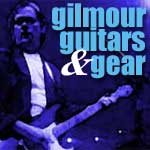 In
this column, I'll be examining Pink Floyd guitarist David Gilmour's gear and
playing techniques from a musician's point of view. Please feel free to e-mail
me with questions and ideas for future articles at RichM66@Compuserve.com if you feel you have an idea that readers of Spare Bricks might find
of interest. Past articles are posted at - http://web.tampabay.rr.com/richm/sbarchive.htm
In
this column, I'll be examining Pink Floyd guitarist David Gilmour's gear and
playing techniques from a musician's point of view. Please feel free to e-mail
me with questions and ideas for future articles at RichM66@Compuserve.com if you feel you have an idea that readers of Spare Bricks might find
of interest. Past articles are posted at - http://web.tampabay.rr.com/richm/sbarchive.htm
In this issue I will be taking a look at David Gilmour's use of chord forms on the first three strings. A chord form is simply a phrase for the visual shape of the chord. There are 5 basic chord forms on the guitar fretboard - C, A, G, E, & D. This is sometimes known as the CAGED sequence. The forms connect with each other as you move up or down the fretboard.
In this case, the C & D chord forms share the same "look." The A & E forms should be just as recognizable.
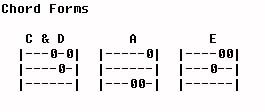
Gilmour first used these forms at the conclusion of "Sheep" from the Animals album in 1977.
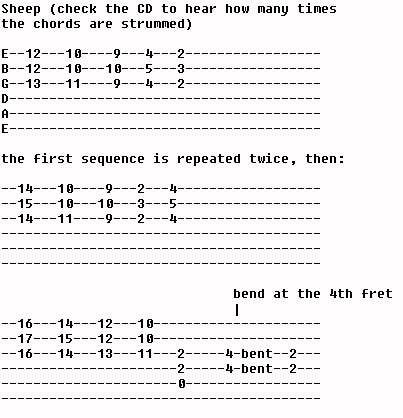
The same forms were used again in "Short And Sweet" from David Gilmour's self-titled debut solo album.
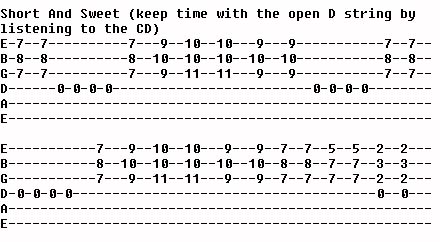
"Run Like Hell" from 1979's The Wall is the most recognizable song to include these chord forms.

Roger Waters used these same chord forms in "The Bravery Of Being Out Of Range" from his 1992 solo release Amused To Death. This sequence is too similar to "Run Like Hell" to be a coincidence, but by changing the timing and rhythm, Waters turns the chord sequence into his own.
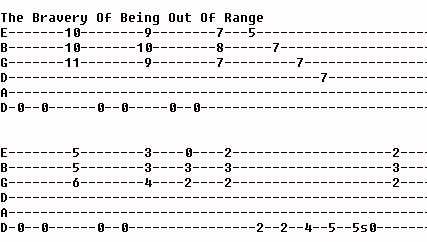
By looking at the release dates, it's easy to speculate that Gilmour wrote these chord sequences in the same time period - Animals in 1977, Gilmour's self-titled debut solo album in 1978 and The Wall in 1979. This is partially true. "Short And Sweet" was a part of Gilmour's solo album and "Run Like Hell" was originally a demo from Gilmour's first solo album. But "Sheep," was originally called "Raving And Drooling" when it was first performed on the 1974 tour.
Richard Mahon is a staff writer for Spare Bricks.